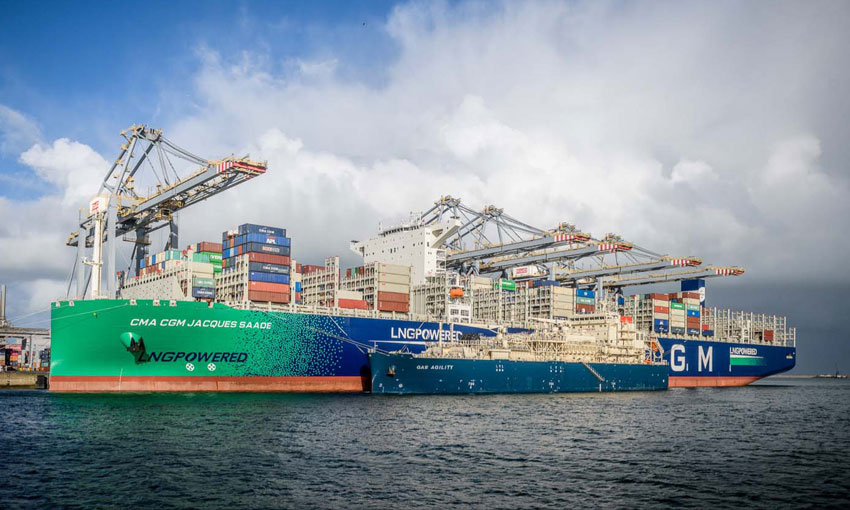Ahead of the UN Global Compact and as part of the first high-level preparatory talks for the COP26 summit, shipping line CMA CGM has put forward solutions that are immediately available and that contribute to achieving the group’s objective of being carbon-neutral by 2050.
The group is supporting the production of 12,000 tonnes of biomethane (equivalent to a year’s fuel consumption of two 1400-TEU ships). Biomethane is a renewable green gas produced in part by the methanation of European-sourced organic and plant waste.
CMA CGM said in a statement, “This energy source represents a fine example of how the circular economy can work while benefiting the agricultural sector.
“CMA CGM intends to push ahead with the development of this energy source by investing in biomethane production facilities and studying the viability of liquefaction processes so that biomethane can be rolled out as a shipping fuel.
CMA CGM cut its overall CO2 emissions by 4% in 2020, following a 6% reduction in 2019. Since 2008, the group has lowered its CO2 emissions per container-kilometre by 49%.
Biomethane powering the equivalent of a shipping line 12,000 tonnes of guarantee-of-origin biomethane is enough to fuel the equivalent of two 1400-TEU LNG-powered ships operating on the Northern European Balt3 line between St Petersburg and Rotterdam for a whole year.
Guarantee-of-Origin Biomethane, coupled with CMA CGM’s dual-fuel gas-power technology, can reduce well-to-wake (entire value chain) greenhouse gas emissions (including CO2) by at least 67%. On a tank-to-wake basis (at ship level), the reduction in greenhouse gas emissions reaches 88% (including CO2).
As of May 2021, the group’s customers will be able to select biomethane with CMA CGM+ range of services.
Rodolphe Saadé, chairman and CEO of the CMA CGM Group, said, “We have crossed a new step with the launch of the first low-carbon shipping offer based on biomethane.
“We know that there is still a long way to go to meet the commitments of the Paris Agreement. Achieving these goals do not rely on a single solution but on a set of initiatives and new technologies complimentary to each other.”

